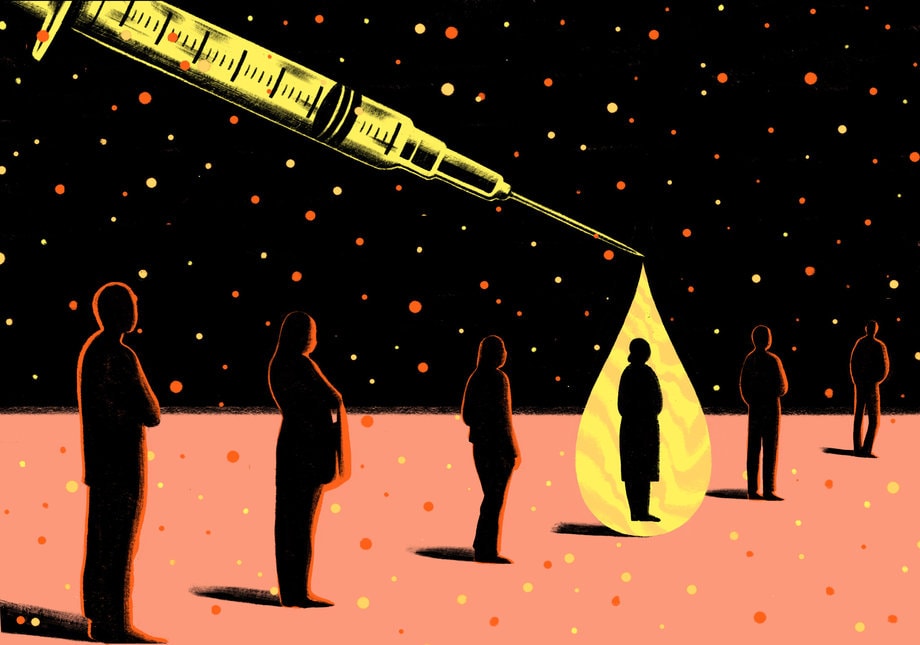What Is The Role Of Vaccines In Preventing Diseases?

Vaccines have played a critical role in preventing the spread of infectious diseases throughout history. This article aims to explore the central role that vaccines play in disease prevention.
The introduction provides a brief overview of the history of vaccines, their mechanisms of action, different types of vaccines, safety and efficacy considerations, and the impact of vaccines on disease prevention.
Additionally, it discusses the concept of herd immunity and the importance of vaccination rates in achieving this protective effect.
Lastly, the introduction briefly mentions the future of vaccines, implying that ongoing advancements and developments in this field hold promise for further disease prevention.
Employing an academic writing style, this introduction maintains objectivity, avoids personal pronouns, and adopts a formal tone to present information on the topic of vaccines and their pivotal role in disease prevention.
Key Takeaways
- Vaccines have played a crucial role in reducing the global burden of infectious diseases.
- Vaccine development and distribution are essential in the fight against infectious diseases.
- Global vaccine distribution ensures accessibility to populations in need, including low-income countries.
- Vaccination not only protects individuals but also contributes to herd immunity and community protection.
History of Vaccines
The history of vaccines traces back to the late 18th century, when Edward Jenner developed the smallpox vaccine, marking the beginning of a revolutionary approach to disease prevention.
Jenner’s discovery was based on the observation that milkmaids who had contracted cowpox appeared to be immune to smallpox. This led him to experiment with using cowpox as a means of protecting against smallpox. His success in vaccinating individuals against the disease laid the foundation for subsequent advancements in vaccine development.
Over the years, the history of vaccination has witnessed significant milestones, such as the development of vaccines for diseases like polio, measles, and influenza. Early vaccine development involved the use of weakened or inactivated forms of pathogens to stimulate the immune system without causing disease. These early efforts paved the way for the development of vaccines that have since saved countless lives and prevented the spread of numerous diseases.
How Vaccines Work
Immunizations function by stimulating the body’s immune response to ward off potential pathogens. Vaccines have been crucial in preventing the spread of various diseases throughout history.
The development of vaccines involves extensive research and clinical trials to ensure their safety and efficacy. Scientists identify the specific antigens that trigger the immune response and create vaccines that contain either weakened or inactivated pathogens, components of pathogens, or genetic material from pathogens. These vaccines help the immune system recognize and remember the pathogen, providing long-term protection against future infections.
Once vaccines are developed, their distribution becomes a critical step in preventing diseases. Governments, healthcare organizations, and public health agencies work together to establish vaccination campaigns, prioritize high-risk populations, and ensure equitable access to vaccines, aiming to achieve widespread immunization coverage and control the spread of diseases.
Types of Vaccines
Different types of vaccines are available to provide protection against a range of infectious diseases. Vaccine development involves a thorough understanding of the disease-causing agent and the immune response it triggers. The two main types of vaccines are live attenuated vaccines and inactivated or killed vaccines.
Live attenuated vaccines contain weakened forms of the disease-causing microorganism, which can still replicate in the body but cause only mild symptoms. This type of vaccine stimulates a strong and long-lasting immune response. Examples of live attenuated vaccines include the measles, mumps, and rubella (MMR) vaccine and the oral polio vaccine.
Inactivated or killed vaccines, on the other hand, contain the microorganism that has been inactivated or killed, so it cannot replicate in the body. These vaccines may require multiple doses or booster shots to provide optimal protection. Examples of inactivated vaccines include the hepatitis A vaccine and the influenza vaccine.
Vaccine administration can be through injection, oral ingestion, or nasal spray, depending on the type of vaccine and the disease being targeted. Each vaccine has its own recommended schedule and dosage.
| Vaccine Type | Examples |
|---|---|
| Live attenuated | Measles, mumps, and rubella (MMR) vaccine |
| Oral polio vaccine | |
| Inactivated or killed | Hepatitis A vaccine |
| Influenza vaccine |
In conclusion, various types of vaccines are developed and administered to prevent the spread of infectious diseases. By stimulating the immune system, vaccines help protect individuals and communities from the harmful effects of pathogens.
Vaccine Safety and Efficacy
This paragraph will discuss the key points of vaccine testing and approval process, common vaccine side effects, and addressing vaccine misinformation.
The vaccine testing and approval process involves rigorous scientific research and clinical trials to ensure safety and efficacy.
Common vaccine side effects, such as mild fever or soreness at the injection site, are generally temporary and outweighed by the benefits of vaccination.
Addressing vaccine misinformation is crucial to ensure accurate information is disseminated and to combat vaccine hesitancy, which can pose a threat to public health.
Vaccine testing and approval process
The vaccine testing and approval process involves a series of rigorous scientific evaluations, including preclinical testing, clinical trials, and regulatory review, to ensure the safety and efficacy of vaccines in preventing diseases.
The vaccine development process begins with extensive vaccine research, where scientists identify the target pathogen and develop strategies to stimulate the immune system.
Preclinical testing follows, involving laboratory and animal studies to assess the vaccine’s safety and effectiveness. If successful, the vaccine proceeds to clinical trials, which consist of three phases involving human volunteers. These trials aim to determine the vaccine’s safety, dosage, and ability to elicit an immune response.
Once the clinical trials are completed, the vaccine manufacturer submits a Biologics License Application to the regulatory authorities for review. The regulatory review involves a thorough examination of the vaccine’s clinical data, manufacturing process, and labeling information. If the vaccine meets safety and efficacy standards, it is approved for public use.
Common vaccine side effects
Common side effects of vaccines include:
- Mild pain or swelling at the injection site
- Low-grade fever
- Muscle aches
These side effects are generally mild and temporary, resolving within a few days. They are a normal response of the immune system to the vaccine, indicating that the body is building immunity.
Serious side effects are rare, occurring in less than 1% of cases. Vaccine safety is rigorously monitored through surveillance systems that track adverse events.
It is important to note that the benefits of vaccination far outweigh the risks. Vaccines have been proven to be highly effective in preventing diseases and reducing their severity.
However, the presence of common side effects can sometimes contribute to vaccine hesitancy, leading to a decline in vaccine uptake. Public education campaigns and transparent communication about vaccine safety are crucial in addressing vaccine hesitancy and promoting vaccine effectiveness.
Addressing vaccine misinformation
Addressing vaccine misinformation requires implementing comprehensive strategies that involve public education campaigns, transparent communication about vaccine safety, and debunking false claims with accurate and evidence-based information.
Vaccine misinformation can lead to vaccine hesitancy and a decrease in vaccination rates, which can have serious consequences for public health. To combat this issue, it is crucial to provide clear and accessible information about vaccines, their efficacy, and their safety.
Public education campaigns should focus on dispelling common myths and misconceptions surrounding vaccines, such as the belief that vaccines cause autism or that they are not necessary for certain age groups.
Additionally, transparent communication from healthcare professionals and public health authorities can help build trust and address concerns.
Debunking false claims with accurate and evidence-based information is essential in countering vaccine misinformation and promoting accurate knowledge about vaccines.
Impact of Vaccines on Disease Prevention
Vaccines have played a crucial role in the eradication of several diseases worldwide. For example, the smallpox vaccine led to the complete eradication of smallpox in 1980, making it the first disease to be eradicated by human efforts.
Additionally, vaccines have been effective in reducing the incidence of various infectious diseases, such as measles, polio, and hepatitis B, by stimulating the immune system to produce a protective response against the pathogens.
The widespread use of vaccines has significantly contributed to the control and prevention of these diseases, leading to improved public health outcomes globally.
Vaccines and eradication of diseases
In the pursuit of eradicating diseases, vaccines have played a pivotal role by effectively reducing the global burden of various infectious illnesses. Vaccine development has been instrumental in preventing the spread of diseases such as smallpox, polio, and measles.
Through extensive research and testing, vaccines have been created to target specific pathogens, triggering an immune response that protects individuals from future infections. Additionally, global vaccine distribution has been crucial in reaching populations in need, particularly in low-income countries. Organizations like the World Health Organization and UNICEF have worked tirelessly to ensure that vaccines are accessible to all, regardless of socioeconomic status.
This has resulted in significant progress in disease eradication efforts, with some diseases, like smallpox, being successfully eliminated from the planet. The continued development and widespread distribution of vaccines are vital in the ongoing global fight against infectious diseases.
Vaccines and reduction in disease incidence
One significant outcome of widespread vaccine distribution is the substantial reduction in the incidence of various infectious illnesses globally.
Vaccines play a crucial role in preventing diseases by boosting the immune system’s ability to recognize and fight specific pathogens.
Vaccine effectiveness studies have consistently shown that vaccines can significantly reduce the risk of infection and transmission of diseases such as measles, polio, and influenza.
For instance, the measles vaccine has contributed to a 73% decrease in measles-related deaths between 2000 and 2018. Similarly, the introduction of the polio vaccine has led to a dramatic decline in polio cases worldwide.
These findings highlight the importance of vaccination programs in controlling and eliminating diseases, ultimately leading to improved public health outcomes and reduced burden on healthcare systems.
Herd Immunity and Vaccination Rates
Herd immunity can be achieved when a significant portion of the population is vaccinated, creating a protective barrier that limits the spread of diseases and reduces the risk for those who are unable to receive vaccines due to medical reasons.
This concept relies on the principle that when a high percentage of individuals in a community are immunized against a particular disease, the likelihood of its transmission decreases significantly. The effectiveness of herd immunity depends on the vaccine coverage, which refers to the proportion of the population that is vaccinated.
A higher vaccine coverage leads to a greater level of community protection, as it reduces the number of susceptible individuals who can serve as hosts for the disease-causing agents.
To illustrate the importance of herd immunity, consider the following:
- Vaccination not only protects individuals but also the community.
- Higher vaccination rates are necessary to achieve herd immunity.
- Herd immunity benefits vulnerable populations, such as newborns and individuals with compromised immune systems.
- The decline in vaccination rates can jeopardize herd immunity and lead to disease outbreaks.
Future of Vaccines
The development of new vaccines holds promise for improving public health and preventing the spread of infectious pathogens. In the future, advancements in vaccine technology are expected to play a crucial role in disease prevention.
One area of focus is the development of new delivery methods that can enhance vaccine efficacy and accessibility. For instance, researchers are exploring the use of microneedles, which are painless and can be self-administered, to deliver vaccines. This could potentially increase vaccine coverage and reduce the burden on healthcare systems.
Additionally, efforts are being made to improve vaccine distribution, especially in low-income countries where access to vaccines is limited. This includes the development of heat-stable vaccines that do not require refrigeration, making them easier to transport and store.
These future advancements in vaccine development and distribution have the potential to significantly impact global health by reducing the burden of infectious diseases.
Frequently Asked Questions
Vaccines are not limited to preventing viral diseases; they can also prevent bacterial infections. By stimulating the immune response, vaccines train the body to recognize and fight off specific bacteria, reducing the risk of infection and its associated complications.
Can vaccines cause any side effects or adverse reactions?
Vaccine safety is a critical concern, and although rare, vaccines can cause side effects or adverse reactions. These potential risks need to be carefully monitored and balanced against the benefits of vaccination.
Do vaccines provide lifelong immunity, or do you need booster shots?
Vaccines do not always provide lifelong immunity, necessitating the need for booster shots. The effectiveness of booster shots varies depending on the vaccine and individual, but they can help maintain immunity against specific diseases.
What is the recommended vaccination schedule for children and adults?
The recommended vaccination schedule for children and adults varies depending on the specific vaccine. Vaccinations are typically administered at specific ages to ensure optimal protection against diseases and to help prevent outbreaks.
Are there any groups of individuals who should not receive vaccines due to medical conditions or allergies?
Individuals who have certain medical conditions or allergies may not be able to receive vaccines. It is important for healthcare providers to assess the individual’s health status and determine if vaccination is safe and appropriate for them.








